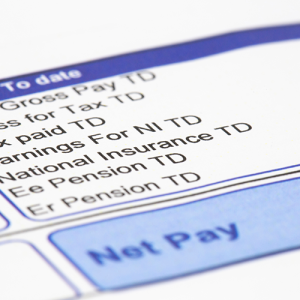
Photo: Akin Falope
It is almost six years since support for low-income working-age households to pay their council tax was localised across England and central government funding for it was cut.
In a recently published report, we investigated the experience so far.
Our first finding is that cuts to support have become much bigger.
Overall, councils’ 2013–14 council tax support schemes provided 14% less support to working-age households in England than the national council tax benefit system they replaced; by 2018–19, they provided 24% less than if the generosity of the pre-2013 system had been maintained.
Reducing entitlements by almost one-quarter is a big cut to what is still Britain’s most widely claimed form of means-tested support: the 3.6 million working-age households in England who would have been entitled some support under CTB are now entitled to an average of £196 per year less.
About half of the additional cuts between 2013 and 2018 have come about because many councils have mirrored central government cuts to national benefits, most notably the freeze to most working-age benefit rates that has been in place since 2015.
In the case of CTS, this means that households can earn less before their CTS entitlement starts to be withdrawn – a cut in support for low-paid workers.
‘Overall, most of the cuts take the form of minimum payments, which require all households – except any ‘vulnerable groups’ protected by their council – to pay at least a certain fraction of their council tax bill.’
But overall, most of the cuts take the form of minimum payments, which require all households – except any ‘vulnerable groups’ protected by their council – to pay at least a certain fraction of their council tax bill.
Seventy per cent of councils introduced minimum payments in 2013; that has now reached 80%, and the average size of those minimum payments has risen from 15% to 19% of the council tax bill.
The result is that, for the first time since the poll tax, many of the lowest-income households have been required to pay local tax – 1.4million households who would have had their council tax bill entirely covered by the old CTB are now required to pay at least some of it themselves.
Yet many of them do not do so. We estimate that one-quarter of the additional council tax liability created by cuts to CTS is not being collected, and the increase in arrears is driven entirely by households who would not have had to pay anything under the old CTB system.
It is specifically having a new bill to pay that seems to pose a problem, rather than the size of the bill.
Households are almost as likely to go into arrears if they are asked to pay £100 a year as if they are asked to pay £300.
And people who would have had to pay some council tax even under the old system are no more likely to go into arrears if their bill is increased.
The rise in council tax arrears is a problem for local authorities too. A 25% non-collection rate on the additional tax liabilities is 10 times the usual rate for council tax.
Since the cuts to CTS represent only a small fraction of total council tax revenue, this does not have a big impact on the overall collection rate – increasing it from 2.5% to 2.7%.
But it does imply that cutting CTS is of limited effectiveness as a way of raising revenue. Nor does the problem look temporary.
One-quarter of the additional liabilities created by minimum payments in 2017–18 went uncollected even where the minimum payment had been in place since 2013–14. Councils are under financial strain and cannot bring in large increases in council tax rates without approval in a referendum.
The only people councils can raise significantly more tax from are those who can least afford it, by cutting their CTS. Our research shows that they struggle to do even that.



















